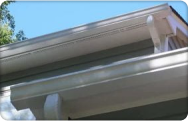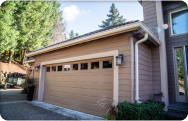Seamless Gutters
What are seamless gutters? They are rain gutters that we create on-site with a gutter machine mounted to a service truck. The simple answer to the question, is they have no seams. They get custom measurements and they’re installed on-site in one continuous run.
The Brothers that just do Gutters offer seamless gutter installation in various materials including copper, aluminum, and galvalume. We also offer them in both half-round and k-style.
Talk to us about Seamless Gutters Today!
Seamless Gutters vs. DIY Gutters
When we refer to DIY gutters, we are talking about sectional gutters. To manufacture gutters that are seamless, you need a professional-grade gutter machine. DIY gutters (sectional) differ because sectional gutters are installed in pieces and have seams.
When comparing seamless gutters vs. DIY gutters, there are some big differences between them in these four major categories: Installation, Security And Strength, Repair Ability & Cost




Installing a Gutter System
The biggest difference is installation. Seamless gutter installation means that gutters are made on-site by rolling a metal sheet through a gutter-forming machine. Then the installer secures it to the side of the home in a continuous run.
Sectional gutters are much more difficult and time-consuming to install. Sectional gutters are most commonly made of vinyl or plastic. These types of materials are not available as a seamless gutter since these materials cannot be made into a roll form. As a sectional gutter system is installed, each section must be mitered and sealed together making the installation process much longer.
Security & Strengths
Seamless gutters are typically stronger simply because they do not have miters joining pieces together. The more seams a gutter system has, the higher the potential is for leaks. Sectional gutters are also less sturdy due to the materials used, making them more susceptible to damage.
Repair Ability
Repairing a seamless system is more difficult since the entire system will typically be in need of a replacement. This tends to happen in the process of repair. However, in the event the gutter system comes off the house, a repair can address this issue.
Cost Comparison
You may assume that sectional gutters are less expensive than the cost of seamless gutters. But, the cost is actually nearly identical because of all the the extra pieces, caulking, and tools needing to complete a sectional gutter install. Also, because sectional gutters may be less sturdy and are often a DIY installation, they are not likely to last as long as a seamless gutter installation. This may mean more costs in the future.
Other Important Resources
Table of Contents
Talk to us about Seamless Gutters Today!
If you are in need of a seamless gutter installation, give The Brothers that just do Gutters a call! We can provide you with a free quote, but most importantly, the peace of mind knowing our experts are here to help you protect your home.
